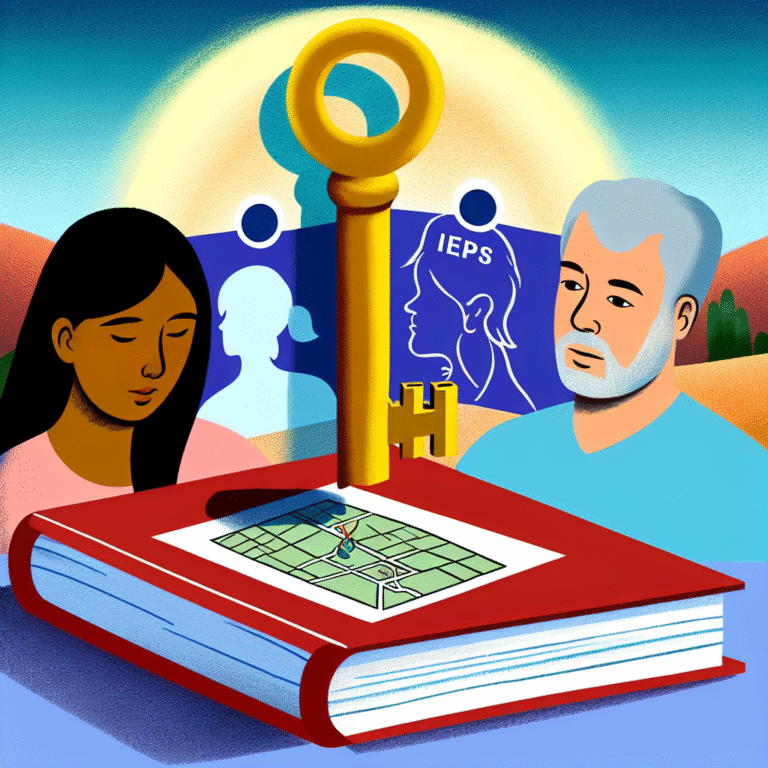
Combating the Stigma: Raising Awareness About Learning Disabilities and Bullying
Introduction
Imagine walking into a classroom where whispers and giggles echo in the air, yet you feel completely isolated. For many children with learning disabilities, this is a harsh reality. The challenges they face are compounded by the stigma surrounding their conditions, often leaving them vulnerable to bullying. Combating the Stigma: Raising Awareness About Learning Disabilities and Bullying is not just a call to action; it’s essential for fostering inclusive environments where all students can thrive. Understanding and addressing this stigma is crucial not only for the well-being of those with learning disabilities but also for creating empathetic communities.
Understanding Learning Disabilities
What Are Learning Disabilities?
Learning disabilities (LDs) encompass a range of neurological disorders that impact an individual’s ability to read, write, reason, or perform math calculations. According to the National Center for Learning Disabilities, approximately 1 in 5 children in the U.S. has a learning disability. This means many classrooms are home to students who may struggle with:
- Dyslexia: Difficulty in reading and processing language.
- Dyscalculia: Challenges with math and number sense.
- Dysgraphia: Issues with writing and coordination.
The Impact of Stigma on Students
The stigma surrounding learning disabilities often leads to misconceptions and stereotypes. This not only affects academic performance but also impacts self-esteem. Children are more prone to feeling isolated and misunderstood, which can exacerbate their struggles. Combating the Stigma: Raising Awareness About Learning Disabilities and Bullying is crucial to changing perceptions and promoting understanding.
The Link Between Learning Disabilities and Bullying
Why Do Children With Learning Disabilities Face Bullying?
Children with learning disabilities often stand out in social environments, making them easy targets for bullying. Factors contributing to this include:
- Limited social skills, making it harder to integrate with peers.
- Sensitivity to criticism, which can lead to reactive behaviors.
- Misunderstandings by peers regarding their capabilities and behaviors.
Research indicates that students with learning disabilities are at a higher risk for both being bullied and bullying others due to their unique challenges.
Case Study: The Journey of Sarah
Background: Sarah, a bright 10-year-old, struggled with dyslexia, making reading a challenging task. Despite her intelligence, she often faced ridicule from her peers.
Incident: During a reading exercise, Sarah stumbled over words, prompting laughter from the class. Over time, this bullying affected her confidence and academic performance.
Outcome: With intervention from her teachers and a supportive community, Sarah began to advocate for herself, educating her classmates about dyslexia. This initiative led to increased awareness and empathy within her classroom.
Analysis: Sarah’s story underscores the importance of educational interventions. By raising awareness, her peers learned to see beyond her difficulties, fostering an environment free from bullying.
Strategies for Combating the Stigma
1. Education and Awareness Programs
Implementing educational programs within schools focused on learning disabilities can help demystify these challenges. Workshops for students, parents, and educators can provide valuable insights into the nature of LDs and how to support affected individuals.
| Program Type | Description | Goal |
|---|---|---|
| Workshops | Interactive sessions for students and parents | To educate about LDs |
| Peer Awareness | Programs where students share experiences | To foster empathy and understanding |
| Teacher Training | Professional development on LDs | To equip educators with tools for support |
2. Encouraging Open Conversations
Combating the Stigma: Raising Awareness About Learning Disabilities and Bullying requires creating safe spaces for open dialogue. Schools should encourage students to share their experiences, promoting a culture of acceptance.
3. Supporting Anti-Bullying Policies
Incorporating specific anti-bullying policies that acknowledge the struggles of students with learning disabilities can provide necessary protections. Clear guidelines and consequences for bullying behaviors are essential.
Success Stories: Schools Making a Difference
Case Study: Riverview Elementary
Approach: Riverview Elementary implemented a peer mentoring program, connecting students with learning disabilities to supportive peers.
Results: The program saw a significant decrease in reported bullying incidents and an increase in academic success for participants.
Analysis: By fostering peer relationships, Riverview showed how supportive communities could effectively combat stigma and reduce bullying.
Case Study: Maplewood High School
Initiative: Maplewood charged students to create awareness campaigns through art, expressing the challenges of learning disabilities.
Outcome: The school’s hallways became filled with powerful murals and messages, leading to increased empathy and understanding among the student body.
Analysis: Creative outlets not only empowered students with learning disabilities but also educated their peers, highlighting the importance of artistic expression in combating stigma.
The Role of Parents and Caregivers
Communicating Effectively
Parents play a vital role in Combating the Stigma: Raising Awareness About Learning Disabilities and Bullying. Openly discussing a child’s learning disability at home can help normalize the condition and empower individuals to seek support.
Advocating for Support
It’s vital for parents to advocate for their children within schools. This includes:
- Seeking tailored educational plans (IEPs) and accommodations.
- Collaborating with educators to ensure a supportive learning environment.
Mental Health and Emotional Wellness
The Psychological Impact of Learning Disabilities
Children with learning disabilities often face mental health challenges such as anxiety and depression, primarily due to bullying and stigma. Creating supportive communities is crucial for fostering resilience.
Strategies for Supporting Emotional Wellness
- Mindfulness Training: Schools can offer mindfulness programs to help students cope with stress and anxiety.
- Counseling Services: Providing access to mental health resources can offer essential support.
Conclusion
Combating the Stigma: Raising Awareness About Learning Disabilities and Bullying is not merely a matter of policy; it is a commitment to fostering understanding and compassion. By educating ourselves and others, we can create a world where every child feels valued and accepted. Together, we can break down barriers, cultivate empathy, and ensure that children with learning disabilities thrive, free from the weight of stigma.
Key Takeaways
- Awareness and education are crucial in combating stigma.
- Collaborative efforts among students, parents, and educators can significantly reduce bullying incidents.
- Supporting mental health and emotional wellness leads to better outcomes for students with learning disabilities.
FAQs
1. What are common misconceptions about learning disabilities?
Many people mistakenly believe that learning disabilities are linked to low intelligence. In reality, individuals with learning disabilities often possess average or above-average intelligence but struggle in specific areas.
2. How can parents advocate for their children with learning disabilities?
Parents can work with educators to create Individualized Education Plans (IEPs) tailored to their child’s unique needs, ensuring they receive proper support in school.
3. What are effective ways to raise awareness in schools?
Schools can host workshops and peer education programs, provide resources for students and faculty, and encourage open discussions about learning disabilities.
4. How does bullying affect children with learning disabilities?
Bullying can severely impact a child’s mental health, leading to issues such as anxiety, depression, and decreased academic performance.
5. How can schools create a supportive environment for students?
By implementing anti-bullying policies, fostering open communication, and educating students and staff about learning disabilities, schools can cultivate a more inclusive atmosphere.
By engaging with this call to action, readers can become part of the solution, helping to destigmatize learning disabilities while creating supportive environments conducive to growth, understanding, and acceptance for all children.






